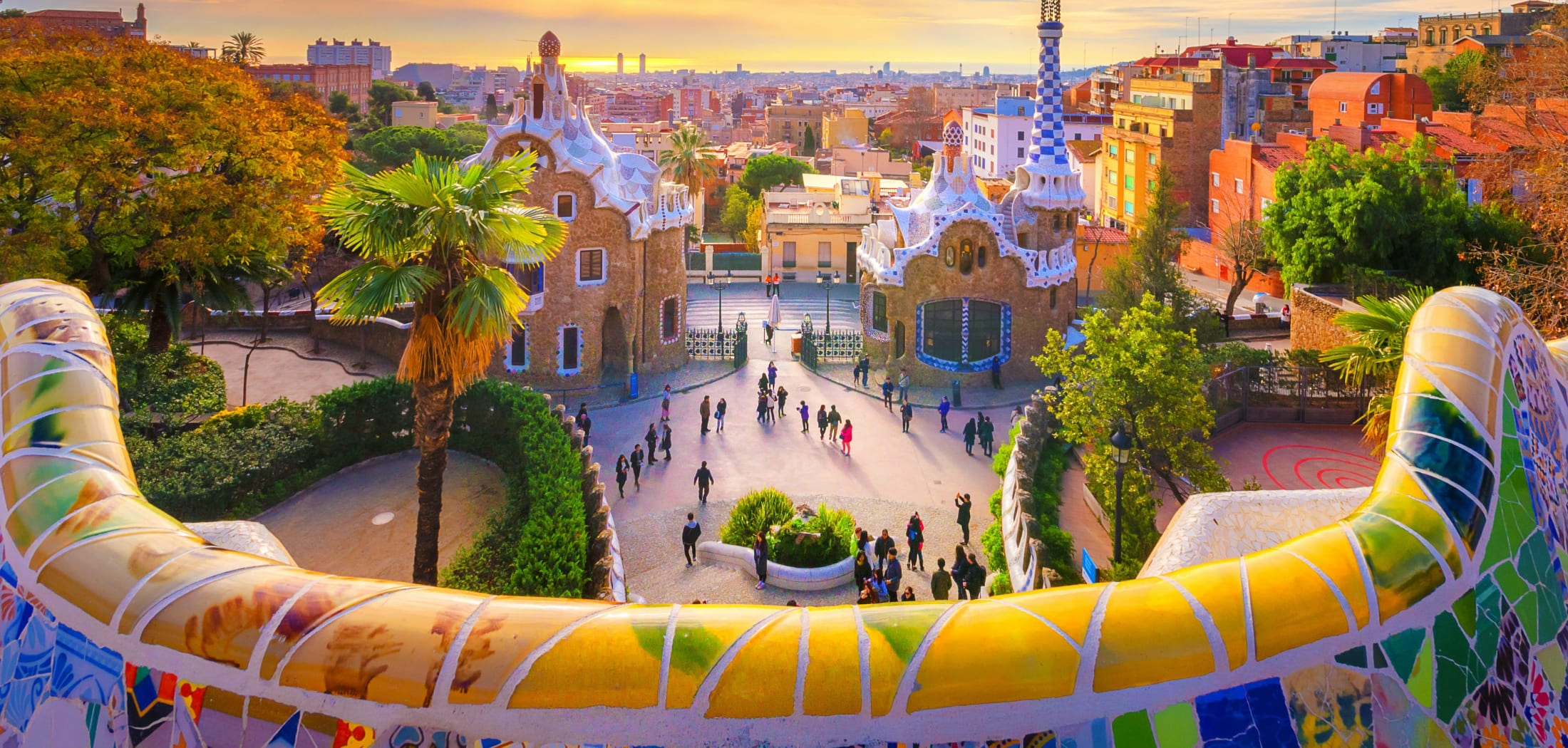
Our expert guide to Barcelona
The Spanish coastal city of Barcelona is known for its majestic beaches, stunning architecture and delicious food. But given that it's the fifth most populated urban area in the EU and there's so much to do, it can be a little overwhelming. From seeing the Sagrada Familia to tasting exquisite Mediterranean delicacies, here are some of the best experiences you can enjoy.
Architectural marvels by Gaudí
Wandering through the Eixample district, you'll be confronted by the sublime UNESCO World Heritage site of La Sagrada Família. This towering structure of 172 metres, with its striking spindle-shaped towers, is a true spectacle for the eyes and this architectural gem hasn't even been finished.
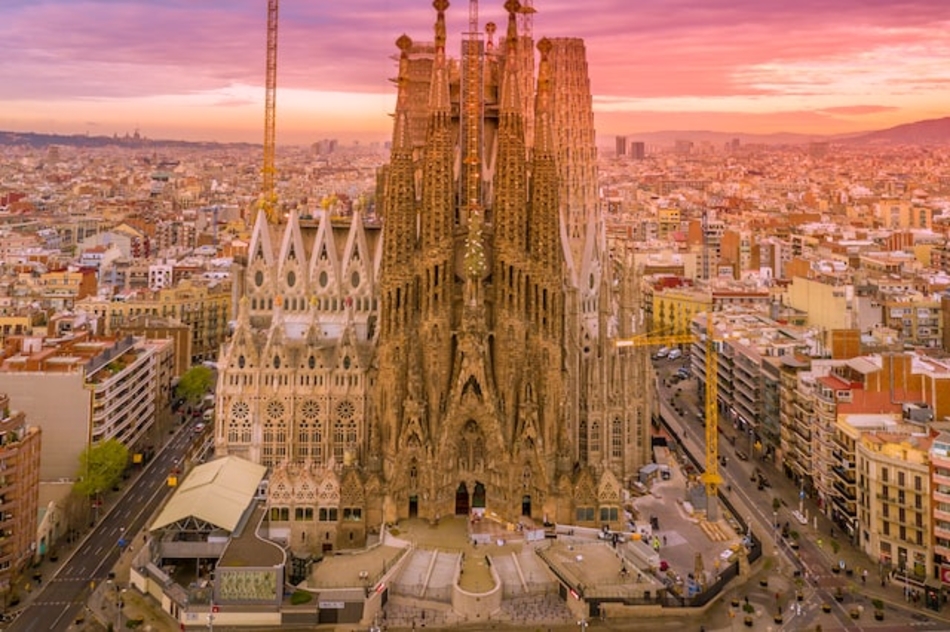
It was originally conceived in 1882 by Spanish architect Francisco de Paula del Villar and commissioned by the Associació de Devots de Sant Josep. Del Villar conceived the project to be a Neo-gothic style temple for Catholic worship but soon abandoned the project following a disagreement with many of his collaborators, leaving the project to be nearly completed by Catalan architect Antoni Gaudí whose designs would mix the original Neo-gothic vision of his predecessor with Art Nouveau.
Following Gaudí’s death in 1926, the project saw numerous delays due to the outbreak of the Spanish civil war and later, due to issues regarding funding and even the COVID pandemic. It is currently still being worked on with its completion expected to be by 2026.
With its eighteen spires representing in ascending order the twelve apostates, the Virgin Mary and the four Evangelists (and when completed would make this the tallest church in the world) as well as three grand façades which tell the stories of the Nativity, the Passion and the Glory, each on different sides of the cathedral. A very colossal and holy work indeed.

You will also love the Casa Batlló which was also designed by Antoni Gaudí and is a grand example of Catalan Modernist architecture.
Located in the centre of the city, the building was first built in 1877 by Spanish architect and professor for Gaudí, Emilio Sala Cortés. However, it was purchased by the prominent textile business magnet Josep Batlló y Casanovas in 1903 who commissioned a redesign by Gaudí who was given free rein to create what he envisioned. It was finished in 1906 and shows the true scope of Gaudí’s genius, combining artist magnificence with modernist functionality. Guests will first be met with the famous rainbow-coloured roof that when reflected in the Barna sun is a treat for the eyes. It also illuminates the cross to the left side of the colourful roof. Towering at 32m high, the structure resembles that of an old gothic mansion, but with the vibrant lighting that blazes out from all its windows, it entraps the viewer within the structure’s world of luminescence and glamour that only Barna can capture.
Plaça de Catalunya
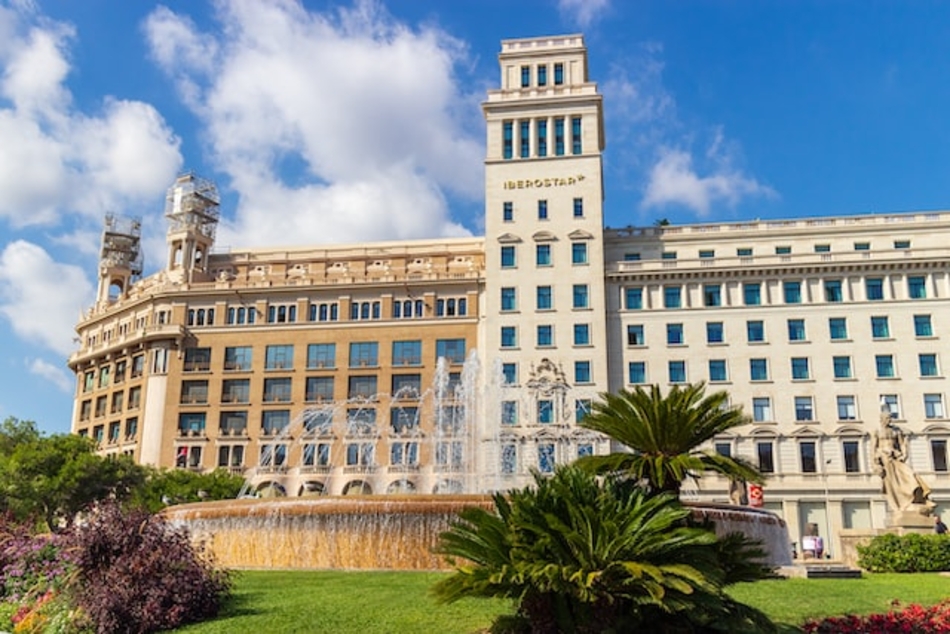
The city square is a hotbed of activity both during the day and during the night. Never shy of any buzz, the capital within the capital is known for its fountains and is surrounded by luscious trees and graceful Catalan Modernist architecture. The centre’s walkways are clean and mesmerising, its design reminiscent of a traditional steering wheel of a ship. While it's lovely to visit during the day, like so many other open spaces in Barna, once night hits and the sun sets, get ready to experience the world-renowned Spanish and Catalan nightlife. But first, treat yourself to some Mediterranean delights cooked up by Chef Sergi Trujillo at Nineteen Restaurant nearby.
A museum for history buffs
Located in Barnas’ Gothic Quarter in Plaça del Rei, the Barcelona City History Museum is a way to travel back into the city’s rich past. The Barcelona City History Museum was first opened in 1943 during the reign of the Fascist dictatorship with its main centrepiece being the Roman remains.
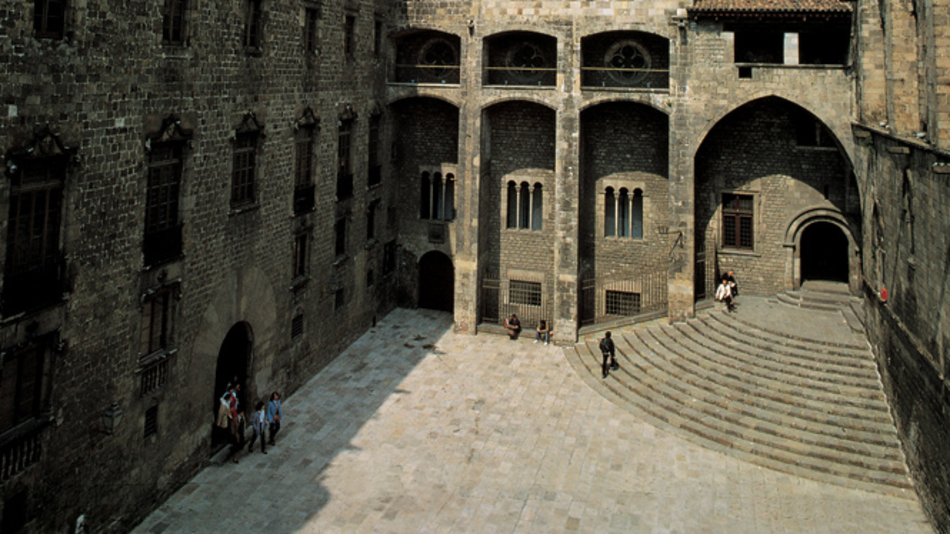
Barcelona was originally a Roman city known by its Latin name of Iulia Augusta Faventia Paterna Barcino or Barcino for short and was founded between 15-10 BC under the first Roman Emperor, Caesar Augustus who it is believed, took it from the Carthaginians. As part of the flourishing Roman Empire, Barcino enjoyed the many infrastructure projects the Romans were known for such as roads, a forum and temples. When the Roman Empire began to dwindle and collapse, these mighty structures would have all but been lost to time, but thanks to this Museum, the ruins of these capsules into the past are preserved and now ready to be experienced by the approximately 816,989 annual visitors.
Guests can see the columns of what’s left of the Temple of Augustus and imagine the once beguiling place of worship and respect, imagining being one of the sites many visitors back in the days of Rome, paying tribute to the emperor. And if Roman history isn’t enough, since the fall of fascism in Spain in the 1970s, the museum now covers a huge range of Barna’s history, from the mediaeval period, the Islamic period, and even more contemporary works. For those fascinated by history, this is a must-see museum to include in your travel itinerary.
Pablo’s early works at the Picasso Museum
But not everything about history must be about conquest, buildings, and empires. Sometimes, all it takes is one great genius and history can be changed forever.
Pablo Picasso was certainly one of those rare individuals whose artistic eye and outlandish vision brought some of the boldest, experimental, and abstract paintings into the forefront of early 20th- century art movements. An innovator if ever there was one, creating striking images in the styles of surrealism, cubism, collage and even sculptures, he was known for such masterpieces such as the voyeuristic cubist 'Les Demoiselles d'Avignon', the disturbing surrealist nightmare piece of 'Guernica' and the twisted yet defining 'The Weeping Woman'.
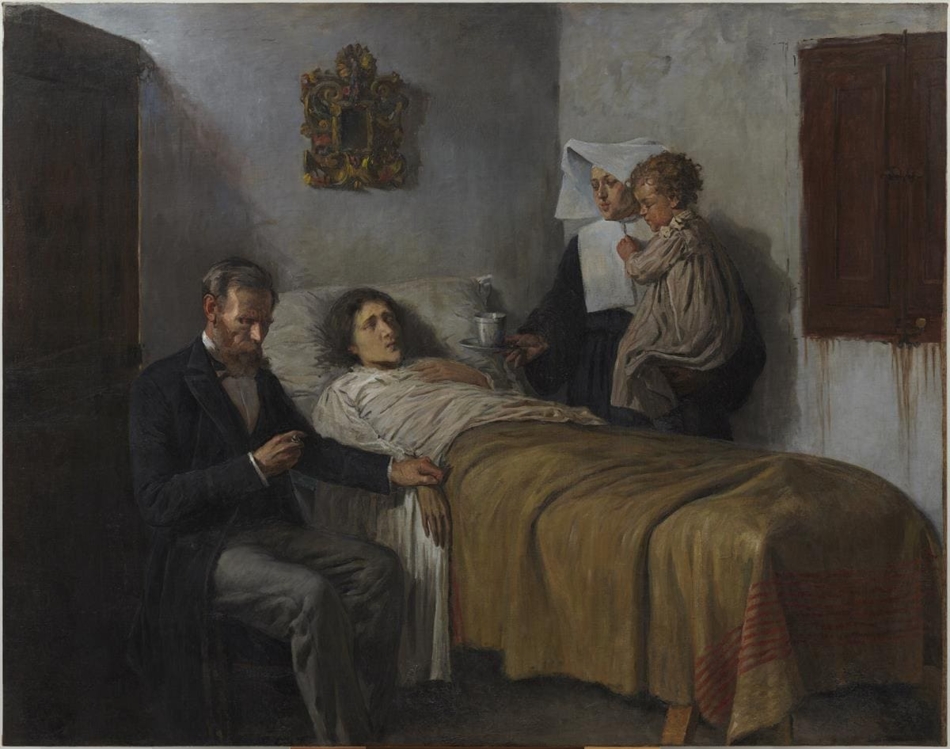
Bridging the gap between horrific yet tragic, melancholic yet at times humorous, very few artists have left such an impact on modern art the same way Picasso has. So, for Barna to honour one of their national treasures is only logical. The Museu Picasso, which opened in 1963, contains an estimated 4251 pieces by the painter, including some of his more early, neo-classical works such as the sombre and moody 'Science and Clarity'. It gives viewers a real in-depth look at the evolution of the artist from tackling realism in his earlier works to exploring dreamlike shapes and distorted figures in his later pieces.
You often see a parallel between the misshapen and disfigurement of his later pieces with the horrors that were inflicted on his country during the horrors of the Spanish Civil War. The anti-war painting Guernica for instance, which is held at the Reina Sofia Museum in Madrid, captures the terrifying bombing by fascist forces of Nazi Germany, Mussolini’s Italy and Franco’s nationalists.
Visiting the Museu Picasso is great if you want to discover many of the artist's formative works through works like 'Portrait of Aunt Pepa' (1896) which he painted during a family trip and The Embrace (1900).
Take to the mountains with Montjuïc
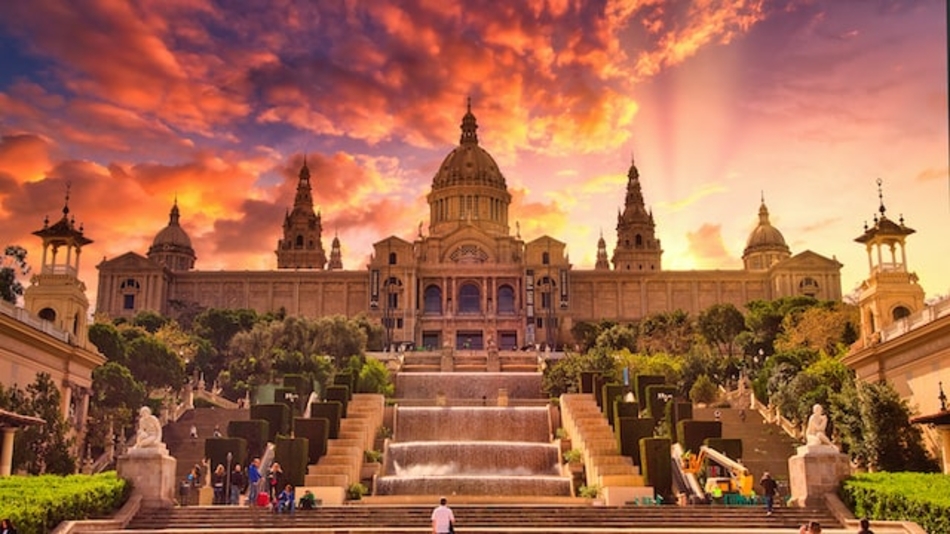
While Barna is a city that never sleeps, you can also escape the hustle and bustle and take to Montjuïc. Overlooking the Barna harbour and the city from a height of 184.8 m, this is the perfect way to fall in love with the city all over again. For all the love one can find on the ground level, it is a whole different kind of love and appreciation when witnessing it from above. Seeing the sun reflect off the buildings, giving each a glimmer of bright warmth, seeing the tiny people move ants, making the city feel far more alive than ever and looking out with astonishment at all the fantastical architecture littered throughout the city. The Montjuïc castle, long believed to have been built in the 1600s holds various sites for guests to feast their eyes on, with the gardens featuring an allotment of green shrubs that fortify multiple-coloured flowers like red and yellow. Enjoy the courtyards with their towering trees and patterned walkways as you journey to the fortress’s wonderous past.
Barcelona's finest restaurants
The Xerta Restaurant, located in the Ohla Eixample hotel, opened in 2016 and is helmed by chef Fran López, who is the fourth youngest chef to have been awarded a Michelin star. Having been awarded a Michelin star just six months after it was first opened, customers are in good hands. They serve Duck and Santa Pau romesquet or Socarrat paella among other mouthwatering Mediterranean classics. Top that off with a vast selection of wine to choose from such as El Puntido and Remelluri Blanco.
But of course, whilst in Barcelona it would be a shame not to experience a world class tapas bar. The Ciutat Comtal located in Rambla de Catalunya has all the delightful little treats that come with a first class outdoor tapas bar. Embrace the warming Barna sun with some delicious prawns skewers, patatas bravas, escalivada with goat cheese and salmon montadito. It’s a spacious and trendy little tapas bar with some amazing food, vibrant atmosphere mixed with friendly locals and tourists alike and great selection of the finest Barna wine.
Barcelona Beaches
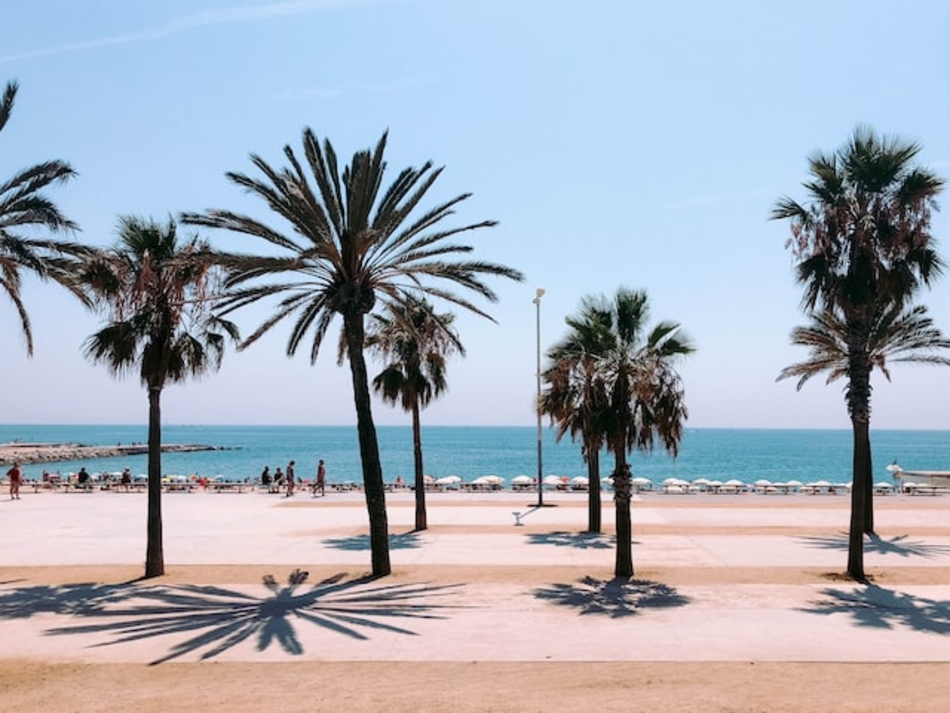
While Barcelona Beach is the most easily accessible, the Llevant near Diagonal Mar beach makes for a perfect getaway. With its lush and smooth sand and shallow waters, it is perfect for sunbathers and for going for a pleasant swim. It’s a peaceful place where you can happily listen to the gentle waves caress the wet sand, though there are beach bars and a children’s play area for kids too.

For the more adventurous nature-lovers, Sant Sebastià Beach near the Ciutat Vella offers watersport activities with an indoor and outdoor swimming area, therapeutic beach massage parlours, table tennis tables and even a fitness area. The atmosphere is far more lively here and is a great place to get fit and have fun, drinking some cold Spanish beer or fine wine with your friends and enjoy the various outdoor activities scattered across this wide beach. The beach also features a nudist part as well as another very LGBTQ+ friendly and inclusive area so it’s an inviting and welcoming part of Barna.
Where to stay: Hotel Arts Barcelona
The Hotel Arts Barcelona is located near to the mesmerising Catholic temple, the Sagrada Família and the heartbeat of Barcelona, the square Plaça de Catalunya. Offering rooms, suites and penthouses with stunning marble finish and refined blue glass on the balconies and windows, this is the perfect retreat from the vibrant city life. All-day bars and lounges as well as the 43rd Spa which overlooks the scenic blue ocean perfectly capture the might and wonder of Barna.
If you’re looking to stay at a stylish Boutique hotel, Almanac Barcelona is a five star hotel located near the Eixample neighbourhood, within a few short feet from the Passeig de Gracia. Featuring 91 luxurious suits with many terrace suits to enjoy a lovely morning coffee (that can be delivered to you with the amazing room service) on the balcony while looking out of the gorgeous modernist architecture. Balconies also include sunbeds, perfect for soaking in the sun while reading or relaxing. A swimming pool is also located on the rooftop and there’s also a wellness area that includes a spa, gym and yoga area. After a long day exploring, head to the rooftop bar to marvel at the city’s architectural achievements with a cool cocktail in hand. On Saturdays a DJ dishes out calming vibes with their chill beats.
Barcelona is perfect for stunning architecture and delicious food. But if what you really need is to hit the snow, we've confident we can help you find the best ski resort for this winter.
Photo credits: Unsplash
